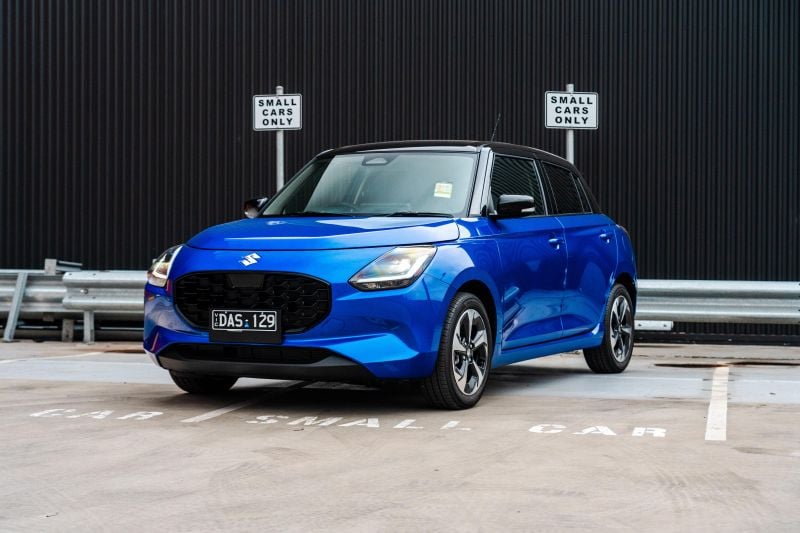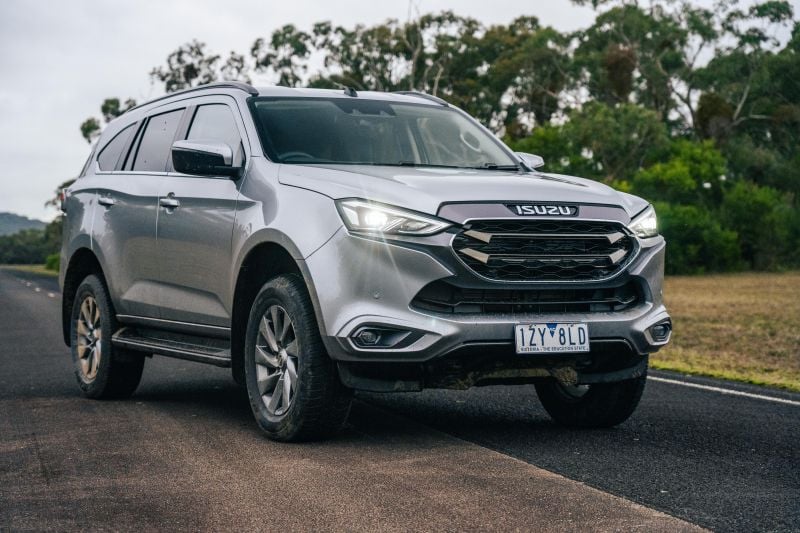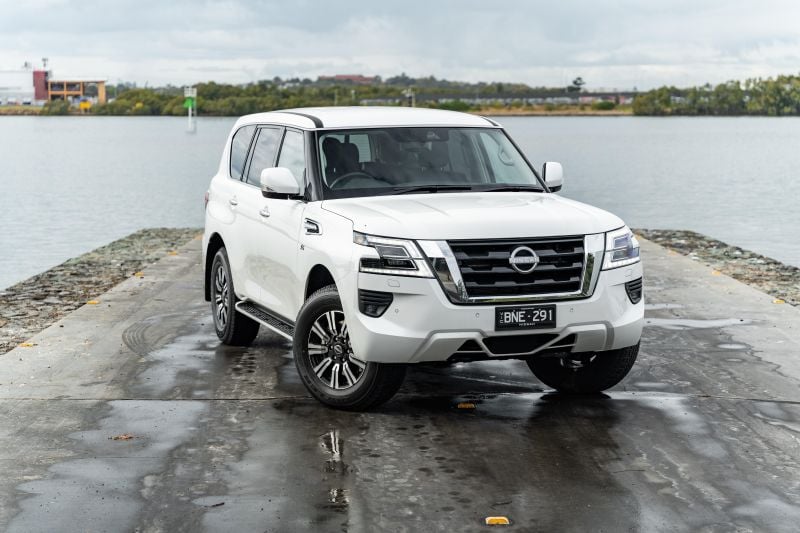The outcomes of the Australian Car Affiliation’s (AAA) newest spherical of its gasoline and emissions Actual-World Testing Program have been launched, and it’s unhealthy information for a number of common autos.
In 2022, the Federal Authorities allotted $14 million to the AAA – the height physique for Australia’s state-based motoring golf equipment, such because the NRMA, RACV and RACQ – to conduct real-world testing on 200 autos beforehand solely examined beneath lab circumstances.
The AAA has now printed the outcomes of 84 autos it has examined, with the most recent, sixth spherical detailing 14 autos.
Of those 14 autos, solely three bettered or matched their producer’s gasoline consumption (litres per 100km) claims.
Lots of of recent automobile offers can be found by CarExpert proper now. Get the consultants in your aspect and rating an ideal deal. Browse now.
The Mitsubishi Outlander was the one car to make use of much less gasoline than what the carmaker achieved in lab testing, consuming two per cent much less petrol within the AAA’s testing.
Nissan’s Patrol and Isuzu’s MU-X 4×4 each had negligible variations to their lab check claims, nevertheless they have been among the many two thirstiest autos examined.
Nonetheless, that left 11 autos with real-world gasoline consumption figures increased than these within the lab checks, with the Mitsubishi Triton, Nissan X-Path, Kia Cerato, Ford Everest V6, Toyota C-HR hybrid, Hyundai i30, Kia Picanto, MG 5, Mazda CX-5, Suzuki Swift Hybrid and Mazda 2 all exceeding their claims.
Within the case of the Mazda 2, it was discovered to make use of 35 per cent extra gasoline when examined by the AAA in comparison with what the carmaker claims. It was an analogous story for the brand new Suzuki Swift Hybrid, consuming 31 per cent extra petrol.
Whereas the MU-X could have been one of some autos to not exceed its gasoline consumption declare, it was the one car to supply extra nitrogen oxide (NOx) emissions in testing than mandated, exceeding the restrict of 180mg/km for diesel autos.
It was discovered to emit 314mg/km – although curiously that is lower than the beforehand examined MU-X 4×2, which used much less gasoline however had increased NOx emissions of 372mg/km.
The AAA and Isuzu Ute Australia have been contacted for remark.
Versus earlier outcomes bulletins, the AAA hasn’t included the baseline lab check outcomes of the CO2 emissions of every car, solely what its testing discovered.
This text will probably be up to date accordingly when the info turns into accessible.
The entire AAA’s real-world street testing is carried out on a 93km loop in and round Geelong. Testing protocols are primarily based on European Union laws however developed for Australia with session between the height group and native regulators and business.
“These outcomes once more present real-world testing is required to assist customers and fleet patrons keep away from shopping for a car that produces extra emissions and better working prices than marketed,” AAA managing director Michael Bradley stated in a media assertion.
“Whereas some vehicles carry out as per the knowledge at level of sale, our Program is revealing that many, if not most, don’t.
“Testing vehicles in actual Australian driving circumstances will assist kind the wheat from the chaff on the subject of vehicles delivering gasoline consumption that matches their mandated laboratory check outcomes, and it’ll act as a complementary audit regime for the NVES [New Vehicle Efficiency Standard].
“The Program is working with the NVES to assist make the nationwide car fleet cleaner and extra fuel-efficient.”
The AAA has not but launched testing outcomes for EVs, that are attributable to be put to the check this yr.
Gasoline consumption outcomes
| Mannequin | Gasoline sort | Lab testing outcome (L/100km) | AAA testing outcome (L/100km) | Disparity vs lab check declare |
|---|---|---|---|---|
| Mitsubishi Outlander | Petrol | 8.1 | 7.9 | -2% |
| Nissan Patrol | Petrol | 14.4 | 14.5 | 0% |
| Isuzu MU-X 4×4 | Diesel | 8.3 | 8.3 | 0% |
| Mitsubishi Triton 4×4 | Diesel | 7.7 | 7.9 | +3% |
| Nissan X-Path | Petrol | 7.8 | 8.2 | +5% |
| Kia Cerato | Petrol | 6.8 | 7.3 | +8% |
| Ford Everest V6 4×4 | Diesel | 8.5 | 9.2 | +8% |
| Toyota C-HR hybrid | Petrol | 4.0 | 5.2 | +10% |
| Hyundai i30 | Petrol | 6.1 | 6.8 | +11% |
| Kia Picanto | Petrol | 6.0 | 6.7 | +11% |
| MG 5 | Petrol | 6.6 | 8 | +21% |
| Mazda CX-5 | Petrol | 7.4 | 9 | +22% |
| Suzuki Swift hybrid | Petrol | 4.0 | 5.2 | +31% |
| Mazda 2 | Petrol | 5.0 | 6.8 | +35% |
CO2 emissions outcomes
| Mannequin | Gasoline sort | AAA testing outcome (g/km) |
|---|---|---|
| Toyota C-HR hybrid | Petrol | 100 |
| Suzuki Swift hybrid | Petrol | 123 |
| Kia Picanto | Petrol | 151 |
| Hyundai i30 | Petrol | 154 |
| Mazda 2 | Petrol | 154 |
| Kia Cerato | Petrol | 166 |
| Mitsubishi Outlander | Petrol | 181 |
| MG 5 | Petrol | 182 |
| Nissan X-Path | Petrol | 186 |
| Mazda CX-5 | Petrol | 205 |
| Mitsubishi Triton 4×4 | Diesel | 210 |
| Isuzu MU-X 4×4 | Diesel | 219 |
| Ford Everest V6 4×4 | Diesel | 241 |
| Nissan Patrol | Petrol | 340 |
MORE: New knowledge reveals much more new vehicles are thirstier and dirtier than claimed
MORE: Actual-world checks reveal the vehicles which are thirstier than they declare
MORE: The favored vehicles, SUVs and utes that may’t match their gasoline economic system claims
MORE: Actual-world gasoline use reveals common Australian new vehicles drastically exceed claims
MORE: Which SUVs don’t match their gasoline economic system stickers in the actual world?
MORE: Extra sensible gasoline effectivity testing now underway in Australia




